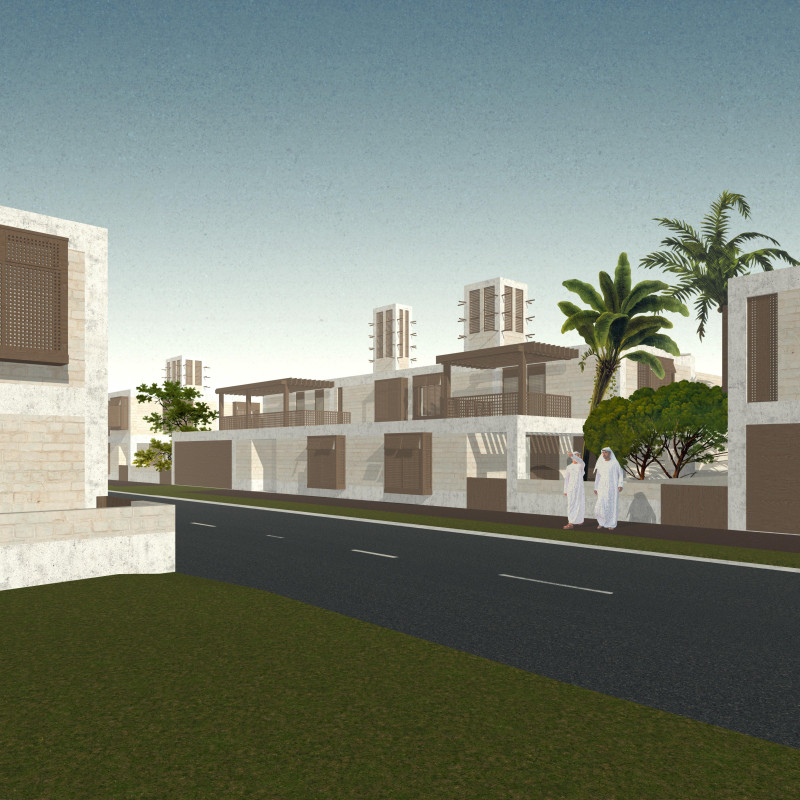5 key facts about this project
Designed with a clear focus on community engagement, the project serves as a versatile space that caters to various functions, whether as a residence, a communal gathering place, or a vibrant hub for local activities. Each aspect of the design has been meticulously considered to enhance its usability while providing a welcoming atmosphere. Clear separation of public and private spaces ensures that the building can accommodate different user needs without compromising comfort and accessibility.
The exterior of the building is characterized by a thoughtful selection of materials, including concrete, glass, wood, and steel. These elements work together to create a façade that is both contemporary and respectful of the surrounding built environment. The use of large glass panels invites natural light into the interior, fostering a connection between the indoors and the outdoors. This approach not only reduces the need for artificial lighting but also promotes a sense of openness. Additionally, strategically placed greenery and landscaped areas integrate with the architecture, softening the overall look and enhancing biodiversity on site.
Internally, the architecture is designed to maximize flow and efficiency. Open-plan layouts create spacious and multifunctional areas that can adapt as needed over time. The use of natural materials, such as sustainably sourced wood for flooring and cabinetry, infuses warmth into the environment while ensuring environmental responsibility. Effective acoustic management through design features allows for a serene atmosphere that enhances the user experience. Key spaces within the project include flexible meeting areas, quiet zones for reflection, and communal spaces conducive to interaction, all contributing to a cohesive living and working environment.
A unique aspect of this architectural design is its commitment to sustainability, which is woven into every detail. From the choice of materials that prioritize low environmental impact to the incorporation of passive solar design techniques, the project reflects an awareness of ecological considerations. Features like green roofs and rainwater harvesting systems not only enhance the building’s efficiency but also serve as an educational tool for occupants, illustrating the importance of sustainability in modern architecture.
The design also employs innovative technologies to enhance user experience and efficiency. Smart building systems monitor energy consumption, lighting levels, and air quality, allowing for adjustments that promote wellbeing and resource efficiency. This integration of technology showcases a forward-thinking approach within the architectural framework of the project.
Throughout the architectural design, careful attention has been paid to ensure that the building tells a story that resonates with its surroundings. Local cultural references and historical elements are thoughtfully incorporated, creating a dialogue between the new structure and its context. This sensitivity to location enriches the project and allows it to become an integral part of the community fabric.
In essence, this architectural project stands as a testament to thoughtful design and functionality, embodying the values of sustainability, community engagement, and modern aesthetics. Its various features and unique approaches create a model for future architectural endeavors that seek to harmonize with their environment. For those interested in exploring this project in further detail, including architectural plans, sections, and innovative design approaches, a deeper presentation is available that showcases the nuances of its architectural ideas.


























